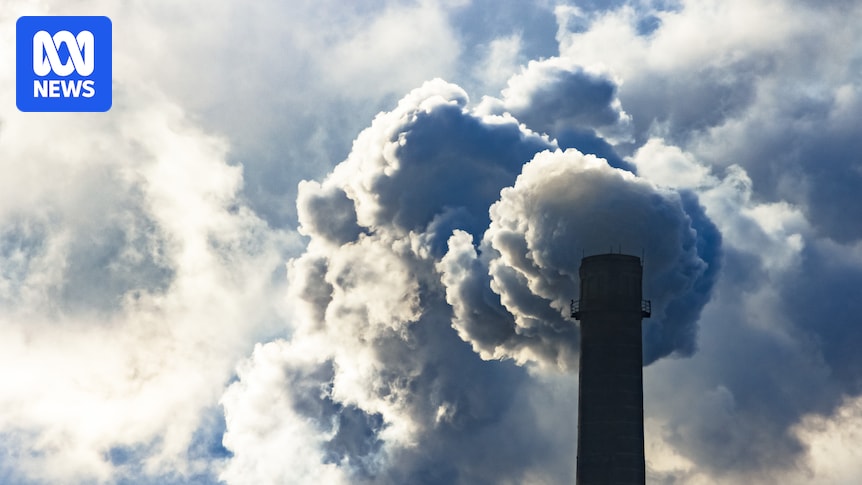Less than a year after Western Australia’s environmental watchdog was stripped of its powers to assess the emissions of some of the state’s most highly polluting projects, environmental advocates and experts say they are concerned the Northern Territory is moving in the same direction.
The WA Environmental Protection Authority (EPA)’s powers were weakened following a review co-written by its former chair Paul Vogel, which recommended a broad set of changes to environment protection laws that one MP characterised as an industry “wish list”.
Among the review’s recommendations were that major projects, including mining, oil and gas projects, should only be examined at the federal level using the Commonwealth’s “safeguard mechanism”, to avoid duplication and cut bureaucracy.
Mr Vogel is now the chair of the Northern Territory EPA.
This week, the NT EPA released its new emissions policy, the atmospheric processes guidance.
It allows the EPA to defer projects to the safeguard mechanism, and cites “the desirability of avoiding duplication” with the federal policy — which, it states, “in most cases meets the NT EPA’s objectives” for reducing emissions.
Why some of Australia’s biggest polluters are celebrating this week
Critics have described the new policy as a “WA blueprint” and say it could lead to higher emissions, less scrutiny and legal risks.
Wesley Morgan, a research associate with the Institute for Climate Risk and Response at the University of New South Wales (UNSW), said WA and the NT had a long history of “competing with each other to attract large-scale fossil fuel projects”.
“They’re falling over each other to make it easier for gas companies to operate in their jurisdictions, and I think this is another example of that,” he said.
Federal government best-placed to lead on climate policy, industry says
David Slama, the NT director of Australian Energy Producers, which represents the majority of Australia’s oil and gas companies, welcomed the NT government’s efforts to “reduce regulatory duplication”.
“The guidelines bring the NT into line with the Commonwealth and Western Australian governments in recognising climate policy is best addressed at a national level through the safeguard mechanism,” he said.
However, Environment Centre NT (ECNT) executive director Kirsty Howey described the policy shift as “disgraceful”.
Kirsty Howey says the new guidance “effectively [strips] the EPA of its ability to properly assess the environmental impact” of projects. (ABC News: Tristan Hooft)
She pointed to new federal data showing the Northern Territory’s emissions have risen by 98 per cent over the past two decades, and said the policy change would only exacerbate the problem.
“This policy is effectively stripping the EPA of its ability to properly assess the environmental impact of projects, both locally and globally,” she said.
“We suspect that we are copying a similar blueprint to WA, which is renowned for being frankly a jurisdiction that takes no responsibility when it comes to the proper regulation of climate impacts.
“[Previously the policy] required the NT EPA to properly assess the emissions that will be generated by highly polluting projects, and to fundamentally change it in this way, strips back these protections.”
The new policy comes after the NT’s Country Liberal Party (CLP) government backflipped on its 2030 emissions reduction target in June.
Since coming to power late last year, the CLP has also scrapped the NT’s large emitters policy and its target of 50 per cent renewables by 2030.
Warning streamlining processes could open the door to legal risks
The federal safeguard mechanism is a policy that has been around for years but has been significantly strengthened by the Albanese government.
It requires big polluters to offset emissions that surpass their annual limit by buying carbon credits.
But Andrew Macintosh, an environment law and policy professor at the Australian National University, said with carbon prices set “incredibly low”, the policy had not been effective.
A major study by Professor Macintosh last year found that nearly a third of projects under Australia’s carbon credit scheme delivered little or no emissions reductions, despite costing taxpayers hundreds of millions of dollars.
He also warned that the NT government had opened itself up to legal risks with its policy change.
Andrew Macintosh says the new policy could lead to legal risks. (ABC News)
“They’re trying to streamline processes for the oil and gas companies, and it could end up doing the reverse by opening up opportunities for legal proceedings,” he said.
Mr Morgan agreed, saying a recent decision by the International Court of Justice — the world’s highest court — could also have significant implications.
“What they found is that countries need to be properly assessing the impacts on the earth’s climate from new fossil fuel projects,” he said.
“Countries that continue to open new fossil fuel projects may be committing internationally wrongful acts and so can essentially be sued by other nations for continuing to harm the climate.”
In a statement, an NT EPA spokesperson said it would require big polluters covered by the safeguard mechanism to submit information on projected emissions from their project and on emission reduction obligations imposed by the mechanism.
“The NT EPA retains full authority to assess and make recommendations on the environmental acceptability of a project,” the spokesperson said.

